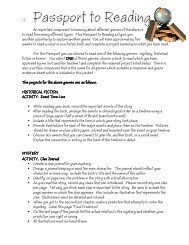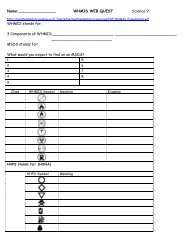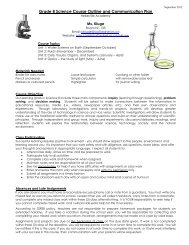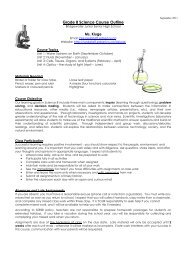1 Unit 4 â Conservation of Mass and Stoichiometry
1 Unit 4 â Conservation of Mass and Stoichiometry
1 Unit 4 â Conservation of Mass and Stoichiometry
You also want an ePaper? Increase the reach of your titles
YUMPU automatically turns print PDFs into web optimized ePapers that Google loves.
There are four types <strong>of</strong> stoichiometry problems, but you do not have to "learn" four different equations for solving<br />
them…the techniques are the same for any conversion problems!<br />
9-3 Limiting Reactants <strong>and</strong> Percent Yield<br />
I. Limiting Reactant<br />
A. Definition <strong>of</strong> Limiting Reactant<br />
1. The reactant that limits the amounts <strong>of</strong> the other reactants that can combine <strong>and</strong> the amount <strong>of</strong><br />
product that can form in a chemical reaction<br />
" I want to make chocolate chip cookies. I look around my kitchen (I have a BIG kitchen!) <strong>and</strong> find 40 lbs. <strong>of</strong><br />
butter, two lbs. <strong>of</strong> salt, 1 gallon <strong>of</strong> vanilla extract, 80 lbs. <strong>of</strong> chocolate chips, 200 lbs. <strong>of</strong> flour, 150 lbs. <strong>of</strong> sugar,<br />
150 lbs. <strong>of</strong> brown sugar, ten lbs. <strong>of</strong> baking soda <strong>and</strong> TWO eggs. It should be clear that it is the number <strong>of</strong> eggs that<br />
will determine the number <strong>of</strong> cookies that I can make."<br />
B. Excess Reactant<br />
1. The substance that is not used up completely in a reaction<br />
C. Identifying the Limiting Reactant<br />
1. Convert grams <strong>of</strong> each reactant to moles if the problem has not already done so for you<br />
2. Use molar ratios from the balance chemical equation to determine which reactant is limiting, <strong>and</strong><br />
which reactant is in excess<br />
D. <strong>Stoichiometry</strong> with Limiting Reactants<br />
1. All calculations should start with the amount <strong>of</strong> the limiting reactant, not the excess reactant<br />
II.<br />
Percent Yield<br />
A. Theoretical Yield<br />
1. The maximum amount <strong>of</strong> product that can be produced from a given amount <strong>of</strong> reactant<br />
B. Actual Yield<br />
1. The measured amount <strong>of</strong> a product obtained from a reaction<br />
C. Calculating Percent Yield<br />
1. The ratio <strong>of</strong> the actual yield to the theoretical yield, multiplied by 100<br />
actual yield<br />
percent yield =<br />
x 100<br />
theoretical yield<br />
8



